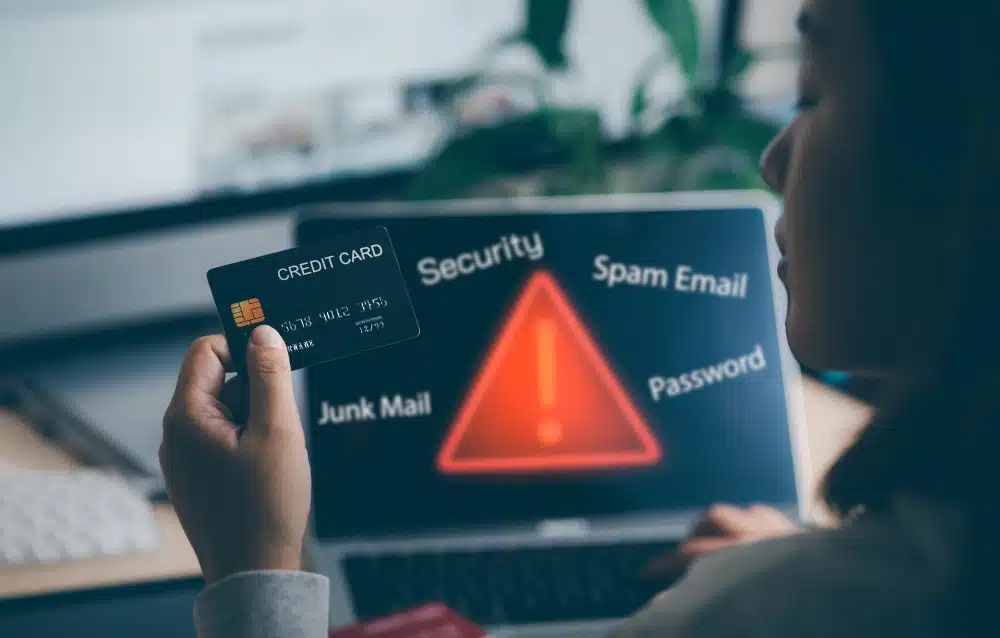Liz Merrill
When Home Isn’t Safe: Digital Tactics for Survivors of Domestic Violence
Domestic violence is a harrowing reality that many individuals face daily. The home, which should be a sanctuary, can become a place of fear and danger. Domestic violence is a pervasive issue affecting countless lives worldwide. Survivors often face a constant battle to protect themselves from their abusers, even within the confines of their own homes. In such dire situations, technology can be both a boon and a bane. Today, I’ll talk about how survivors of domestic violence can use technology to enhance their personal safety and maintain their privacy. I’ll also be highlighting how abusers might exploit technology as a tool for manipulation and control and discuss how understanding these tactics can help victims safeguard themselves.


Abuser Tactics
- Your partner may use technology to stalk and keep an eye. This can include tracking your location through smartphone apps, monitoring your social media accounts, or even installing spyware on your devices.
- Your abusive partner may send threatening or manipulative messages to induce fear or compliance.
- They may violate your privacy by accessing your email, social media accounts, or personal documents.
- They may use technology to gaslight and manipulate you psychologically, making you doubt your own perceptions or memories.
- In some cases, they may attempt to discredit or defame you by posting false information or private photos online. If such a thing happens, you should document those instances and report them to the platform administrators or seek legal action.
Basics of Online Safety
During times of crisis, having quick access to emergency services can really make a difference. One effective solution is to use smartphone apps specifically designed for emergencies. There are several smartphone apps designed specifically for personal safety. These apps can help you discreetly send distress signals to trusted contacts or authorities, share your real-time location, and even record audio or video evidence of abusive incidents. Some popular safety apps include “Circle of 6”, “bSafe”, and “PanicGuard”. Other than that, you can also set your close friends or family members as emergency contacts or speed dials on your phone, so you can reach out for help with just a few taps.
Moreover, it’s important to address concerns regarding privacy and personal safety. Your partner being able to track your location can have its benefits, but it can also expose vulnerabilities. To have peace of mind, you can take precautions like turning off location services or revoking location permissions from apps that may be secretly and unnecessarily tracking you. Also, you can protect your online activities by using virtual private networks (VPNs) and Tor browsers, which allow anonymous browsing. As for social media, should frequently change your password and keep revisiting your privacy settings to make sure there’s no shady activity.
Additionally, it’s worth noting that some messaging apps don’t provide adequate end-to-end protection, leaving your conversations potentially susceptible to spying. To safeguard your privacy, it is recommended to use privacy-focused messaging apps like Signal or WhatsApp, where you can have peace of mind that your conversations will remain private and away from prying eyes.
Remember that strong, unique passwords are the foundation of digital safety. You should use password managers to create and store complex passwords. Also. you should enable 2FA on your online accounts as it adds an extra layer of protection. Even if an abuser knows the password, they won’t be able to access accounts without the second verification step.
Online Communities and Support
The internet can be a source of support and connection. There are various platforms like Open Space Mediation specially designed to provide support to individuals going through domestic abuse. Get in touch with them to have an open space where you can talk your heart out without hesitation and fear of judgment. You can also get in touch with organizations like RAINN and The National Domestic Violence Hotline in case of an abusive incident as they offer comprehensive resources and guidance.
Seeking Help and Support
There are numerous helplines and hotlines available to survivors of domestic violence. These services can provide immediate assistance and connect survivors to local resources. In case the situation takes a drastic turn, you also have the right to seek legal aid to obtain restraining orders or protective orders against your abusive partner. Divorce mediators and lawyers can guide you through the process.
Emotional healing is an essential aspect of recovery. To minimize the long-term psychological and emotional effects of abuse, you should consider counseling and therapy to address the psychological trauma caused by domestic violence.
In the face of domestic violence, technology can be a lifeline or a weapon. By understanding how to use digital tools for your safety and recognizing potential abuser tactics, you can empower yourself to break free from the cycle of abuse.
If you or someone you know is experiencing domestic violence, please seek help immediately. You are not alone, and there are resources available to support you on your journey to safety and healing.
FAQs
Can technology really help survivors of domestic violence?
Absolutely. Technology can be both a tool of abuse and a means of empowerment. Survivors can use it to enhance their safety, connect with support networks, and access valuable resources.
What should I do if I suspect someone is a victim of digital abuse?
Offer your support and encourage them to seek help from a domestic violence hotline or shelter. Respect their decisions and privacy, and avoid sharing sensitive information online.
Are there any apps specifically designed for survivors of domestic abuse?
Yes, there are several apps that cater to survivors, providing features like panic buttons, safety planning, and discreet help requests. These include Circle of 6, bSafe App, and PanicGuard, among many others.